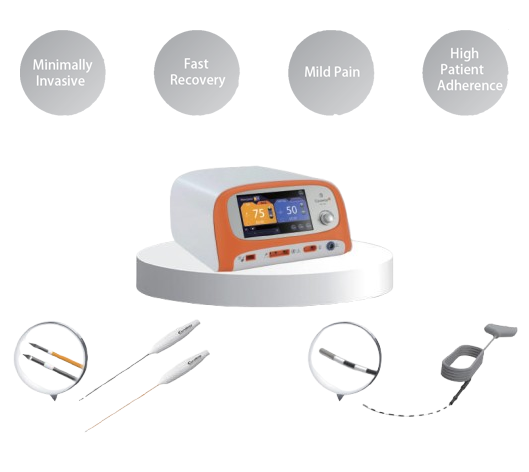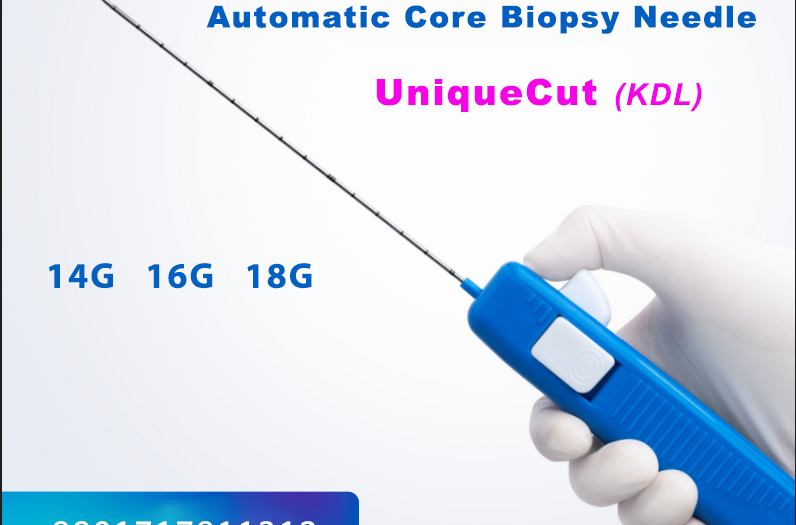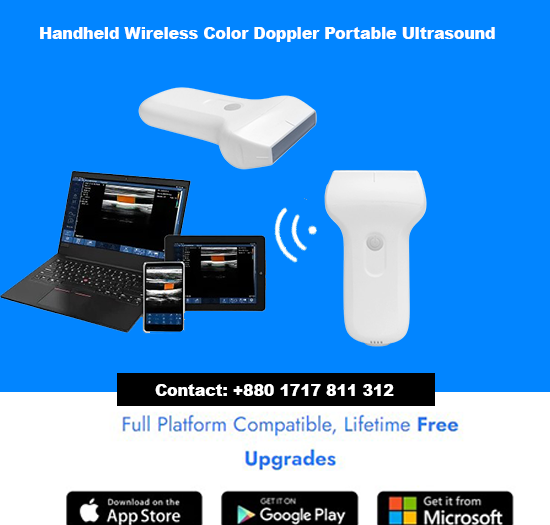Working Principle of Radiofrequency Ablation (RFA) for Surgery
Working Principle of Radiofrequency Ablation (RFA) for tumors, Hemorrhoids & Anal Fistule , Nerve ablation (pain management), and Varicose veins Surgery
Radiofrequency Ablation (RFA) is a minimally invasive procedure that uses high-frequency alternating current (350–500 kHz) to generate controlled heat and destroy targeted tissues. It is widely used in tumors, hemorrhoids, anal fistulas, nerve ablation (pain management), and varicose veins surgery.
📞 Contact
Unique Medi Trade
📞 +8801717811312 📧 Email: uniquemeditrade21@gmail.com
The RFA process follows three key mechanisms:
- Ionic Agitation → Heat Generation
- Protein Denaturation → Cell Death
- Tissue Collapse → Shrinkage or Absorption
1. Ionic Agitation – Heat Generation
- When RF energy is applied through an electrode, it creates a rapidly alternating electric field in the tissue.
- Charged ions (e.g., Na⁺, K⁺, Cl⁻) within the extracellular and intracellular fluid begin to vibrate and oscillate due to this high-frequency field.
- This rapid movement of ions causes friction, which generates heat inside the tissue.
- The temperature rises (typically 60–100°C), initiating thermal damage.
🟢 Effect: Produces controlled heating within the target tissue without affecting surrounding structures significantly.
2. Protein Denaturation – Cellular Destruction
- As the temperature increases beyond 60°C, proteins within the cell begin to denature (lose their natural structure).
- This leads to:
✅ Enzyme inactivation → Disrupts cellular metabolism.
✅ Membrane disruption → Cell walls lose integrity.
✅ Coagulative necrosis → The tissue becomes non-functional and starts breaking down.
🟢 Effect: The targeted cells lose function and die, preventing abnormal tissue from growing or spreading.
3. Tissue Collapse – Structural Breakdown
- After the proteins denature, the affected tissue shrinks and dehydrates, leading to:
✅ Closure of blood vessels → Stops further blood supply (used in vein ablation).
✅ Fibrotic scar formation → The body absorbs dead tissue over time.
✅ Loss of abnormal function → Effective for tumors, Hemorrhoids & Anal Fistule , nerve ablation (pain management), and varicose veins.
🟢 Effect: The damaged tissue collapses, shrinks, or gets resorbed, completing the ablation process.
1. RFA for Tumors (Liver, Kidney, Lung, Bone, Thyroid, etc.)
Working Mechanism:
- A thin probe (electrode) is inserted into the tumor under ultrasound, CT, or MRI guidance.
- Radiofrequency energy heats the tumor to 60–100°C, causing coagulative necrosis.
- The tumor cells die, and the body gradually absorbs or scars off the tissue over time.
✅ Effective for: Liver cancer, kidney cancer, lung nodules, bone tumors, thyroid nodules.
✅ Advantage: Minimally invasive, quick recovery, and can be repeated if needed.
2. RFA for Hemorrhoids & Anal Fistulas
Working Mechanism:
- A needle-like RFA probe is inserted into the hemorrhoidal tissue or fistula tract.
- The RF current generates heat, leading to vascular coagulation and tissue shrinkage.
- For hemorrhoids, the blood supply is cut off, and the swollen veins shrink and scar off.
- For anal fistulas, the abnormal tract is ablated and sealed to promote healing.
✅ Effective for: Grade 2–4 hemorrhoids, complex anal fistulas.
✅ Advantage: Less bleeding, minimal post-operative pain, faster healing compared to traditional surgery.
3. RFA for Nerve Ablation (Pain Management)
Working Mechanism:
- A thin RF catheter is placed near the target nerve under fluoroscopy (X-ray) or ultrasound guidance.
- The RF energy disrupts the pain-conducting nerve fibers, preventing pain signals from reaching the brain.
- This provides long-lasting pain relief without the need for medication.
✅ Effective for: Chronic back pain, arthritis, trigeminal neuralgia, sciatica, post-surgical pain.
✅ Advantage: Non-surgical, precise targeting, relief lasts from months to years.
4. RFA for Varicose Veins Surgery (Endovenous RFA Ablation)
Working Mechanism:
- A thin RFA catheter is inserted into the affected vein under ultrasound guidance.
- The RF energy heats the vein walls, causing collagen contraction and vein closure.
- The body reroutes blood flow to healthier veins, and the closed vein gradually disappears.
✅ Effective for: Large varicose veins, chronic venous insufficiency (CVI).
✅ Advantage: Minimally invasive, no surgical scars, faster recovery than vein stripping.
Conclusion
Radiofrequency Ablation (RFA) is a highly effective, safe, and minimally invasive technique for various conditions:
- Tumors → Destroys cancer cells with heat.
- Hemorrhoids & Fistulas → Shrinks and seals abnormal tissues.
- Nerve Ablation → Blocks pain signals for long-term relief.
- Varicose Veins → Closes diseased veins and redirects blood flow.
📞 Contact
Unique Medi Trade
📞 +8801717811312 📧 Email: uniquemeditrade21@gmail.com




